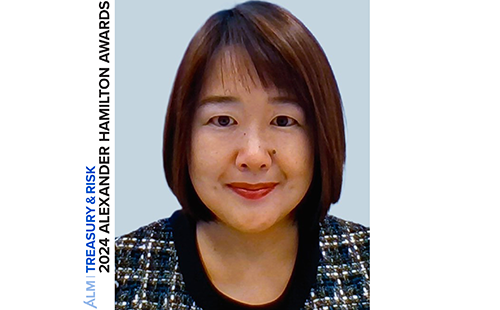
As most markets around the world become increasingly accessible to foreign companies and investors, some remain stubbornly closed. Of particular concern to corporate treasury teams, currency controls in certain locales continue to create barriers to launching or growing foreign subsidiaries. A couple of years ago, Microsoft treasury faced this situation in Brazil.
The company's Brazilian sub was growing fast. “It's a market with a lot of potential,” says Sunnie Ho, a senior treasury manager in Microsoft's Global Cash Management group. “But Microsoft Brazil has an increasing number of transactions with organizations based outside of Brazil.” These transactions were placing a drag on the productivity of local finance staff, and the issue was growing along with the business.
To make an offshore payment, Microsoft Brazil had to provide its bank with invoices and other documentation to prove that the transaction was for one or more legitimate payables. The bank would review the paperwork it received from Microsoft; then, once it approved the transaction, the bank would withhold the appropriate amount of tax based on the type of products or services being paid for, conduct a foreign exchange (FX) transaction from Brazilian real (BRL) to the other currency, and settle the transaction.
As offshore payments grew to cover more than 20,000 invoices a year, worth over $500 million, it became clear the manual processes were unsustainable. “In addition to the staff time consumed with managing all the documentation, we had people manually calculating taxes owed and summing many invoices to get the right amount for a given FX transaction,” Ho says. “There was a chance of human error in this process—for transactions to be the wrong size or a payment to not be paid on time.”
Ho says that as Microsoft prepared to support growth of the Brazilian subsidiary, treasury recognized the need to change the payment process. “That actually came as a surprise to some people on the project team,” she says. “We've found that a lot of people outside treasury don't understand the different cash management requirements in different countries. They just assume that if you have an invoice, you pay it. But it can be a lot more complicated than that in a market like Brazil.”
 Microsoft's treasury team launched an initiative to streamline cross-border payments out of Brazil. They organized several workshops over a four-month period, soliciting feedback both from internal teams and external banks. They documented the company's current-state end-to-end processes from booking invoices to payment reconciliation, as well as the exact data points that banks required before transferring funds out of Brazil. They also researched the degree to which the Brazilian government would allow FX processes to be automated, and they benchmarked how other companies were handling cross-border payments.
Microsoft's treasury team launched an initiative to streamline cross-border payments out of Brazil. They organized several workshops over a four-month period, soliciting feedback both from internal teams and external banks. They documented the company's current-state end-to-end processes from booking invoices to payment reconciliation, as well as the exact data points that banks required before transferring funds out of Brazil. They also researched the degree to which the Brazilian government would allow FX processes to be automated, and they benchmarked how other companies were handling cross-border payments.
All this research resulted in a recommendation that Microsoft develop a plug-in to the company's enterprise resource planning (ERP) system. The treasury project team turned to the engineering group focused on supporting Microsoft's ERP system. “They traveled with us to our banks and to Brazil, to understand what our options were,” Ho says. “It was important to have the engineering team plugged in from the beginning, to make sure they could support our needs.”
The ERP plug-in that the engineering team created reports all the cross-border payables the Brazilian subsidiary owes. “The plug-in generates a payment file that automatically calculates the total amount to pay offshore,” Ho says. “At the same time, it generates a summary report with all the information the bank requires to make the payment. Our ERP system has a lot of tables, and the plug-in pulls each type of information from the right table to provide the necessary documentation for our bank.”
Now, in the middle of each month, Microsoft Brazil presents its bank with a batch payment file and a documentation file. The company would like to eventually transmit this information via XML format with further product development from the bank. For now, secured file transfer is the most efficient transmission method that is acceptable to Microsoft and the bank.
The documentation file includes the invoice amount and details for each payable, the withholding tax rate, and an internal reference number for the associated payment file. In Microsoft's ERP system, the plug-in records the correct reference number for each invoice. Once the bank confirms the payment request with Microsoft Brazil, via either email or phone call, it completes the FX transaction and makes the payment. Later, when Microsoft Brazil receives an electronic statement from its bank, the ERP system can automatically reconcile invoices to the payment.
See also:
- On-demand webcast: How to Leverage Payment Innovations and Efficiencies
- Centralizing Payments Across 100 Markets Around the World
- Improving Efficiency of Global Travel Sourcing
- 2019 Alexander Hamilton Awards in Technology Excellence
Standardizing and automating these processes has dramatically reduced the staff time required to provide documentation for cross-border payments, even as Microsoft has grown its Brazilian business unit. It has also enabled Microsoft to get a better handle on currency risk. “The Brazilian sub's payables are in reals,” Ho says. “That means that as a U.S. company, we have exposure every month to the BRL. Toward the end of each month, our team looks in the ERP system to see how many offshore invoices are being created. Then we hedge that amount on a rolling one-month basis. By the middle of the next month, when the offshore invoices are paid, that clears out the BRL payable liability and we start over.”
Ho attributes the success of this initiative to the fact that the project team involved all affected parties, both internal and external, throughout the process. “Working closely with our bank was critical in making sure this was going to work,” she says. “Coordinating with internal stakeholders was also critical. We made sure that everyone who would be impacted felt like they were contributing to the process, so no one felt that we were imposing this change on them.
“We also made sure to have in-person meetings with all the people who would be impacted,” Ho adds. “Treasury speaks in our terms; the business and international finance groups may use different terminology. On a conference call, misunderstandings might happen. Meeting in person meant traveling to Brazil, but it was well worth the effort.”
Microsoft treasury built this ERP plug-in solution to support Brazil's operations, where applicable, but Ho anticipates that Microsoft may utilize the same solution in other parts of the world. “Microsoft operates in over 120 countries, through more than 400 legal entities,” she says. “Brazil is not the only country we operate in that has currency controls. If our subs in other countries feel that the paperwork for cross-border payments is too cumbersome, we can apply to them the same methodology we've developed for Brazil.”
© 2025 ALM Global, LLC, All Rights Reserved. Request academic re-use from www.copyright.com. All other uses, submit a request to [email protected]. For more information visit Asset & Logo Licensing.




